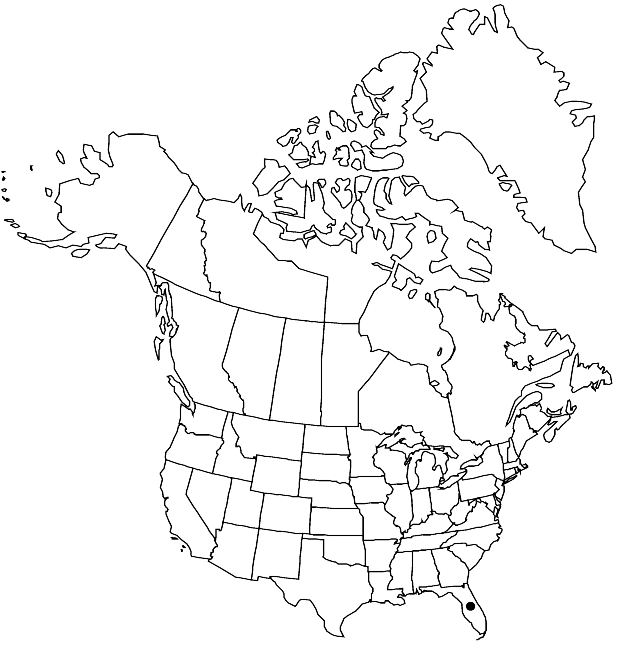Difference between revisions of "Quadrella jamaicensis"
in F. Berchtold and J. S. Presl, Prir. Rostlin 2: 260. 1825.
FNA>Volume Importer |
FNA>Volume Importer |
(No difference)
| |
Revision as of 20:21, 24 September 2019
Shrubs or trees, 1–6 m. Stems ± terete, lepidote (scales peltate). Leaves: petiole 6–21(–25) mm, nectaries present; blade ovate to ovate-elliptic, 5–15(–21) × 2.5–5(–8) cm, coriaceous, base narrowly cuneate to rounded, apex usually emarginate, sometimes acuminate or acute, abaxial surface lepidote, adaxial surface glabrous. Inflorescences (1–)2–6 cm. Pedicels 7–18(–35) mm, lepidote. Flowers nocturnal, fragrant; sepals (7–)12–18 × 6–7 mm, abaxially reddish lepidote; petals creamy white to purple, elliptic-obovate, 12–18 × 10 mm; stamens 18–30, 40–50 mm (woolly basally); gynophore (1–)6–7(–9) cm. Capsules indehiscent, linear-cylindric, (7–)20–38 × 0.8–1.2 cm, ± regularly constricted between seeds, lepidote, scales peltate. Seeds (3–)6–16(–38), 7–8 mm. 2n = 16.
Phenology: Flowering spring–early summer.
Habitat: Coastal hammocks, disturbed coastal scrub, on bare rock
Elevation: 0-10 m
Distribution

Fla., Mexico (Campeche, Quintana Roo), West Indies (Cuba, Jamaica), Central America.
Discussion
Quadrella jamaicensis is an ornamental with attractive flowers and mostly emarginate leaves. It is characteristic of coastal areas from central Florida (Cape Canaveral, St. Petersburg) to the Keys, Cuba, and Jamaica; it is rarely sympatric with its closest relative, Q. cynophallophora (Linnaeus) Linnaeus, in the Bahamas and Hispaniola.
Selected References
None.